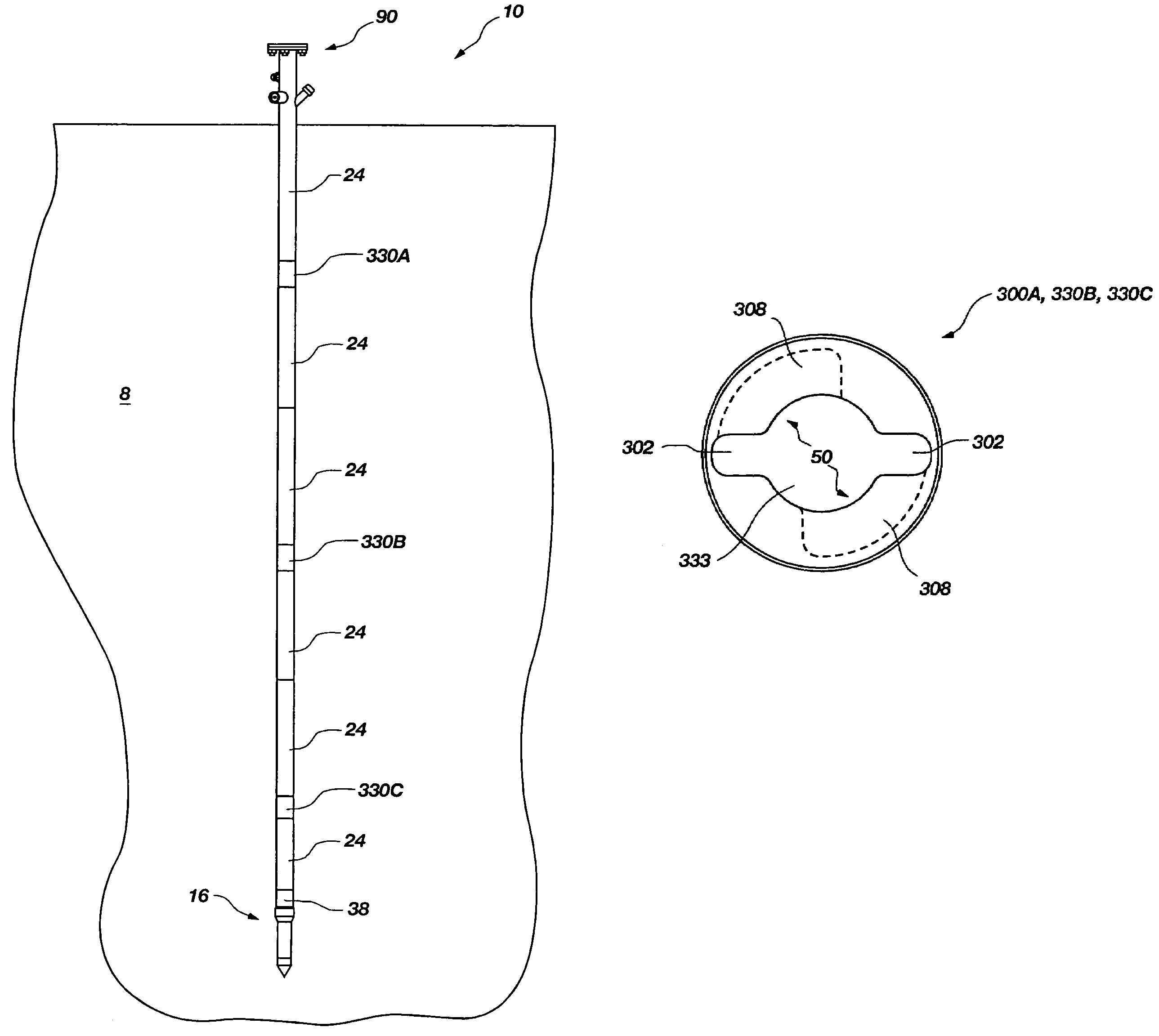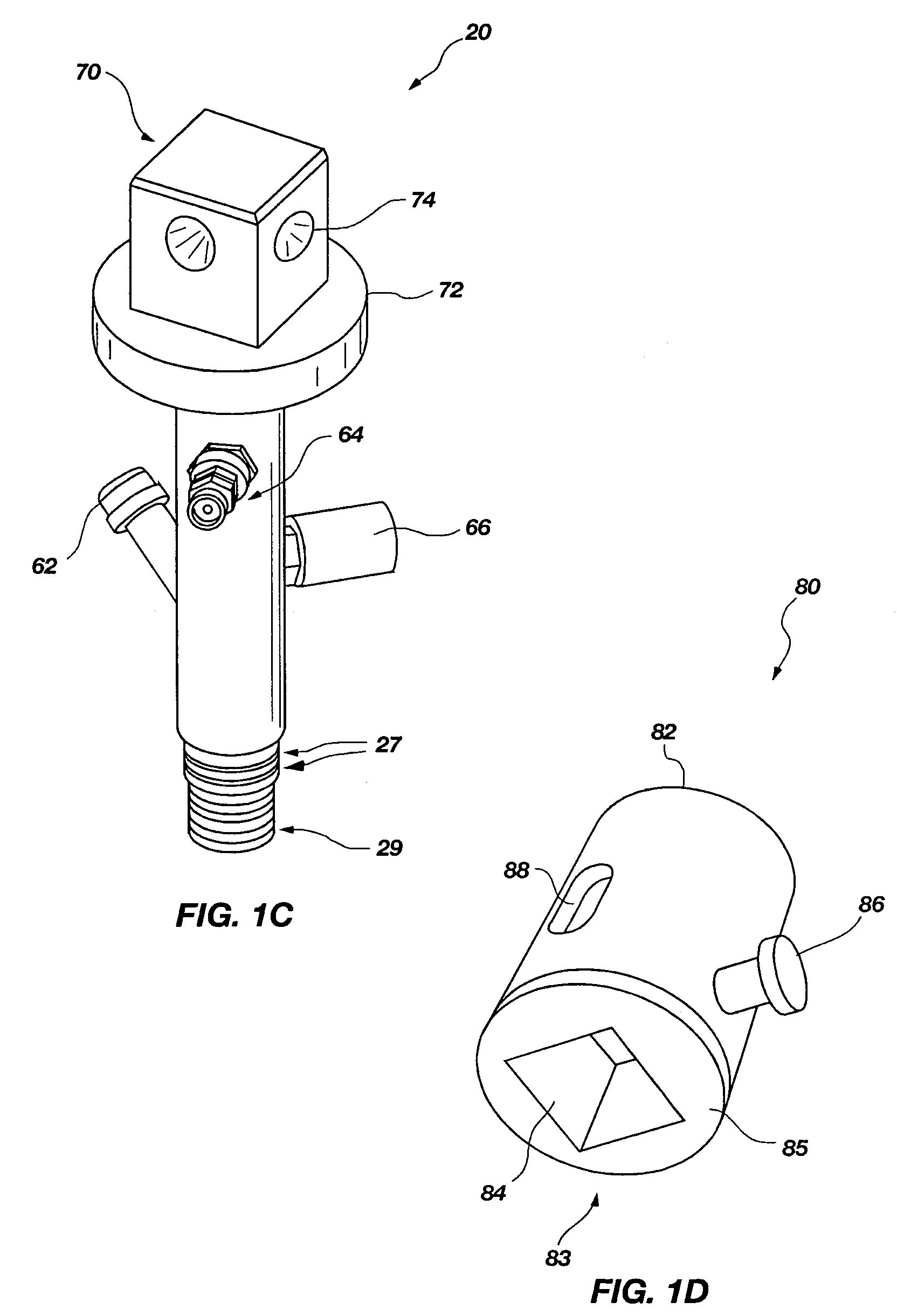Apparatuses for interaction with a subterranean formation, and methods of use thereof
a technology of subterranean formation and subterranean water, which is applied in the field of methods and apparatus for interaction with a subterranean formation, can solve the problems of not being able to be installed directly through hardened soil, concrete, steel, other metals or waste products, and not being easily repaired or replaced
- Summary
- Abstract
- Description
- Claims
- Application Information
AI Technical Summary
Problems solved by technology
Method used
Image
Examples
Embodiment Construction
[0055]The present invention relates to methods and apparatuses for interaction with a region of a subterranean formation. For instance, the present invention relates to methods and apparatuses for measuring at least one characteristic of a region of a subterranean formation. Also, the present invention relates to methods and apparatus wherein an access casing assembly may be structured for selectively receiving, individually, a plurality of different sampling or interaction devices, configured for sampling or interaction with a subterranean formation, respectively.
[0056]The present invention allows for interaction with a region of a subterranean formation, such as, for instance, sampling or measuring thereof without the need for drilling, coring, or prior excavation. One method of the present invention includes placing an access casing assembly at least partially into a subterranean formation using direct push, sonic drilling, rotation, or a combination thereof and then selectively ...
PUM
| Property | Measurement | Unit |
|---|---|---|
| length | aaaaa | aaaaa |
| height | aaaaa | aaaaa |
| height | aaaaa | aaaaa |
Abstract
Description
Claims
Application Information
 Login to View More
Login to View More - R&D
- Intellectual Property
- Life Sciences
- Materials
- Tech Scout
- Unparalleled Data Quality
- Higher Quality Content
- 60% Fewer Hallucinations
Browse by: Latest US Patents, China's latest patents, Technical Efficacy Thesaurus, Application Domain, Technology Topic, Popular Technical Reports.
© 2025 PatSnap. All rights reserved.Legal|Privacy policy|Modern Slavery Act Transparency Statement|Sitemap|About US| Contact US: help@patsnap.com



